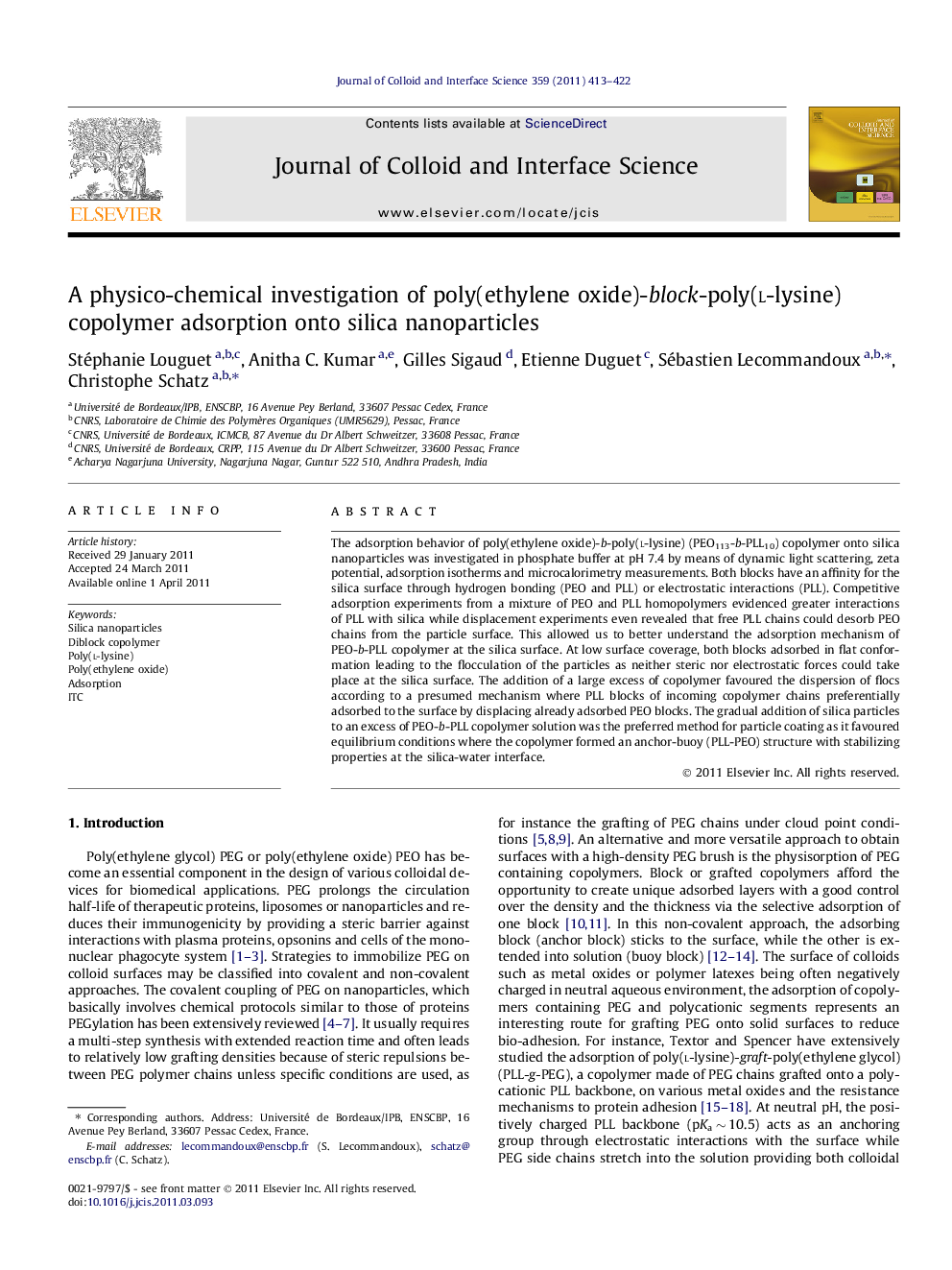| Article ID | Journal | Published Year | Pages | File Type |
|---|---|---|---|---|
| 608674 | Journal of Colloid and Interface Science | 2011 | 10 Pages |
The adsorption behavior of poly(ethylene oxide)-b-poly(l-lysine) (PEO113-b-PLL10) copolymer onto silica nanoparticles was investigated in phosphate buffer at pH 7.4 by means of dynamic light scattering, zeta potential, adsorption isotherms and microcalorimetry measurements. Both blocks have an affinity for the silica surface through hydrogen bonding (PEO and PLL) or electrostatic interactions (PLL). Competitive adsorption experiments from a mixture of PEO and PLL homopolymers evidenced greater interactions of PLL with silica while displacement experiments even revealed that free PLL chains could desorb PEO chains from the particle surface. This allowed us to better understand the adsorption mechanism of PEO-b-PLL copolymer at the silica surface. At low surface coverage, both blocks adsorbed in flat conformation leading to the flocculation of the particles as neither steric nor electrostatic forces could take place at the silica surface. The addition of a large excess of copolymer favoured the dispersion of flocs according to a presumed mechanism where PLL blocks of incoming copolymer chains preferentially adsorbed to the surface by displacing already adsorbed PEO blocks. The gradual addition of silica particles to an excess of PEO-b-PLL copolymer solution was the preferred method for particle coating as it favoured equilibrium conditions where the copolymer formed an anchor-buoy (PLL-PEO) structure with stabilizing properties at the silica-water interface.
Graphical abstractThe mechanism of poly(ethylene oxide)-b-poly(l-lysine) (PEO113-b-PLL10) copolymer adsorption onto silica nanoparticles was studied in detail. The particles flocculated at low copolymer surface coverage whereas they were well stabilized by a PEO brush-like layer in the presence of an excess of copolymer.Figure optionsDownload full-size imageDownload high-quality image (97 K)Download as PowerPoint slideHighlights► The adsorption mechanisms of poly(ethylene oxide)-block-poly(L-lysine) (PEO-b-PLL) copolymer onto silica nanoparticles are studied. ► At low surface coverage the adsorption of both PEO and PLL blocks in flat conformation destabilizes silica nanoparticles. ► PLL blocks have higher affinity with silica surface and can displace adsorbed PEO blocks. ► At sufficient surface coverage PLL blocks are adsorbed to the substrate while free PEO blocks extend to solution. ► Well-stabilized particles are preferentially obtained by adding silica particles to a large excess of copolymer solution.
